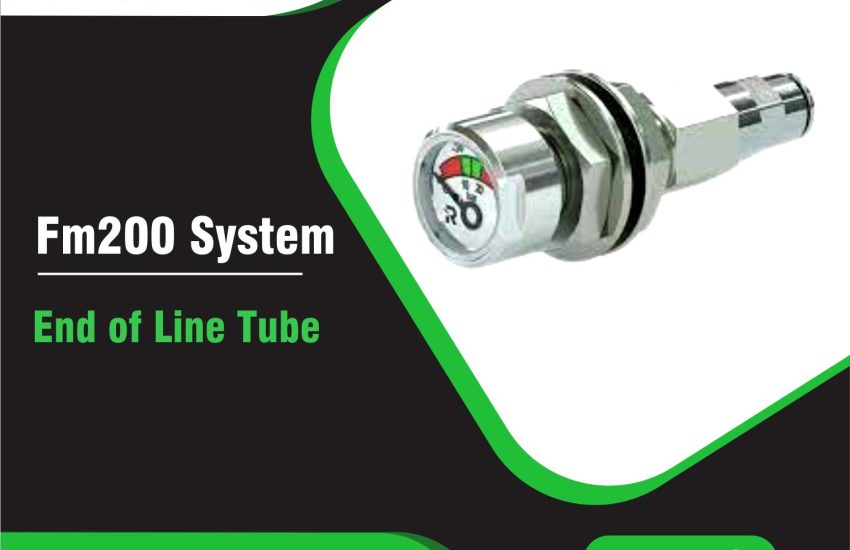End of Line Tube is an essential component in fluid control systems, ensuring proper flow management. It is commonly used in industries such as fire protection, plumbing, and HVAC systems. This article will explore the specifications, features, benefits, and applications of the End of Line Tube.
What is an End of Line Tube?
An End of Line Tube connects to the end of a pipe or tubing system. It regulates the flow of liquids or gases and helps maintain the system’s efficiency. The tube also detects blockages or leaks, ensuring the system remains intact and functions properly.
Key Features of End of Line Tubes
- Durable Materials: End of Line Tubes use high-quality materials such as stainless steel, brass, and PVC. These materials provide strength and resistance to corrosion.
- Leak-Proof Design: The tube prevents fluid or gas from escaping, helping maintain proper pressure in the system.
- Easy Installation: Available in various sizes, End of Line Tubes fit different piping systems. Their simple design ensures easy installation and replacement.
- Pressure and Flow Control: These tubes regulate the pressure and flow of fluid or gas. Some designs also include pressure relief mechanisms to protect against overloads.
- Corrosion Resistance: Built to last, End of Line Tubes resist corrosion, making them suitable for harsh conditions like extreme temperatures or chemical exposure.
Specifications of End of Line Tubes
- Material: End of Line Tubes are made from stainless steel, brass, or PVC. Stainless steel is ideal for high-pressure systems, while PVC works well for lower-pressure applications.
- Size: The tube sizes range from ¼-inch to several inches in diameter, depending on system requirements.
- Pressure Rating: Some tubes withstand pressures up to 3000 psi, depending on their design and material.
- Temperature Range: These tubes function well within a temperature range of -20°F to 500°F (-29°C to 260°C).
- Connection Type: Tubes may feature threaded, welded, or slip-fit connections, ensuring compatibility with different piping systems.
- Flow Rate: Flow rates vary with size and design, so selecting the right tube to match system requirements is crucial.
Benefits of End of Line Tubes
- Efficient System Operation: End of Line Tubes maintain fluid or gas flow and help stabilize pressure, improving overall system efficiency.
- Enhanced Safety: By preventing leaks and pressure imbalances, the tube reduces the risk of system failures, enhancing safety.
- Durability and Reliability: Made from strong, corrosion-resistant materials, these tubes offer reliable performance in demanding environments.
- Versatility: Available in various sizes and materials, End of Line Tubes are adaptable and suitable for use in fire protection, HVAC, and plumbing systems.
- Low Maintenance: These tubes require minimal upkeep due to their durable construction, making them cost-effective and long-lasting.
Applications of End of Line Tubes
End of Line Tubes are widely used across many industries:
- Fire Protection Systems: End of Line Tubes regulate the flow of water or suppression agents in fire systems. They ensure the system works properly during emergencies.
- Irrigation Systems: These tubes control water flow in irrigation systems, preventing blockages and ensuring uniform distribution in agricultural fields.
- HVAC Systems: In HVAC systems, End of Line Tubes manage refrigerant flow and prevent leaks, helping maintain system performance.
- Plumbing: In plumbing, these tubes prevent leaks and ensure water flows properly. They also provide closure points for maintenance or repairs.
- Industrial Applications: Industrial facilities use these tubes to regulate gases or chemicals in pipelines, ensuring smooth operation of essential equipment.
Conclusion
The End of Line Tube is vital for fluid and gas control. It helps regulate pressure, improves safety, and prevents leaks in various systems. Its durable construction, corrosion resistance, and versatility make it indispensable in fire protection, plumbing, HVAC, and industrial applications. With its reliable performance and low maintenance needs, the End of Line Tube is an excellent choice for many systems.


